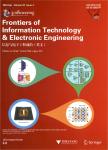Attention-based encoder-decoder model for answer selection in question answering
Attention-based encoder-decoder model for answer selection in question answering作者机构:College of Computer National University of Defense Technology Changsha 410073 China Institute of Information Engineering Chinese Academy of Sciences Beijing 100093 China Luoyang Electronic Equipment Test Center Luoyang 471003 China
出 版 物:《Frontiers of Information Technology & Electronic Engineering》 (信息与电子工程前沿(英文版))
年 卷 期:2017年第18卷第4期
页 面:535-544页
核心收录:
学科分类:13[艺术学] 0808[工学-电气工程] 0809[工学-电子科学与技术(可授工学、理学学位)] 08[工学] 1305[艺术学-设计学(可授艺术学、工学学位)] 0810[工学-信息与通信工程] 0839[工学-网络空间安全] 081104[工学-模式识别与智能系统] 0804[工学-仪器科学与技术] 0835[工学-软件工程] 081101[工学-控制理论与控制工程] 0811[工学-控制科学与工程] 0812[工学-计算机科学与技术(可授工学、理学学位)]
基 金:Project supported by the National Basic Research Program (973) of China (Nos. 2013CB329601 and 2013CB329604) and the National Natural Science Foundation of China (Nos. 61372191 61202362 and 61472433)
主 题:Question answering Answer selection Attention Deep learning
摘 要:One of the key challenges for question answering is to bridge the lexical gap between questions and answers because there may not be any matching word between them. Machine translation models have been shown to boost the performance of solving the lexical gap problem between question-answer pairs. In this paper, we introduce an attention-based deep learning model to address the answer selection task for question answering. The proposed model employs a bidirectional long short-term memory (LSTM) encoder-decoder, which has been demonstrated to be effective on machine translation tasks to bridge the lexical gap between questions and answers. Our model also uses a step attention mechanism which allows the question to focus on a certain part of the candidate answer. Finally, we evaluate our model using a benchmark dataset and the results show that our approach outperforms the existing approaches. Integrating our model significantly improves the performance of our question answering system in the TREC 2015 LiveQA task.



